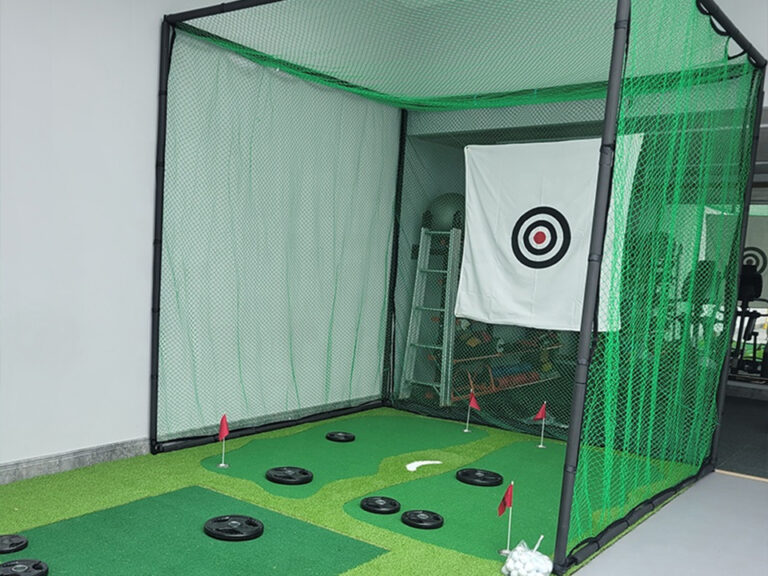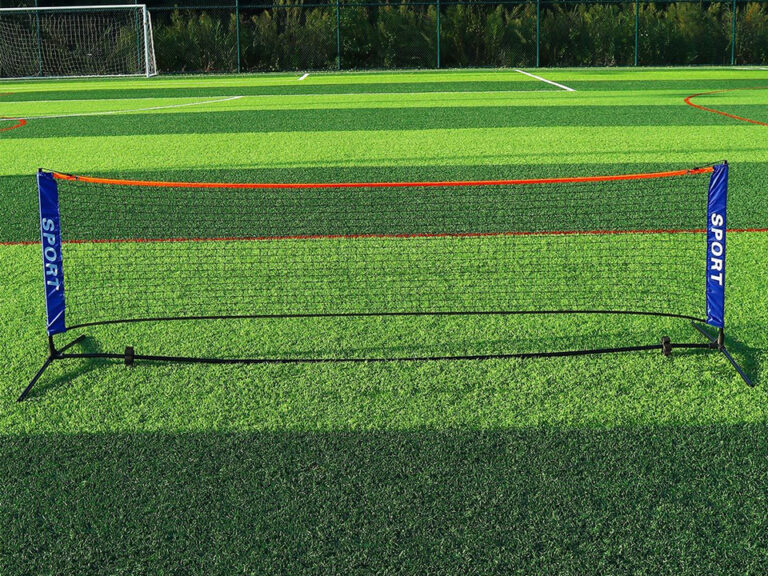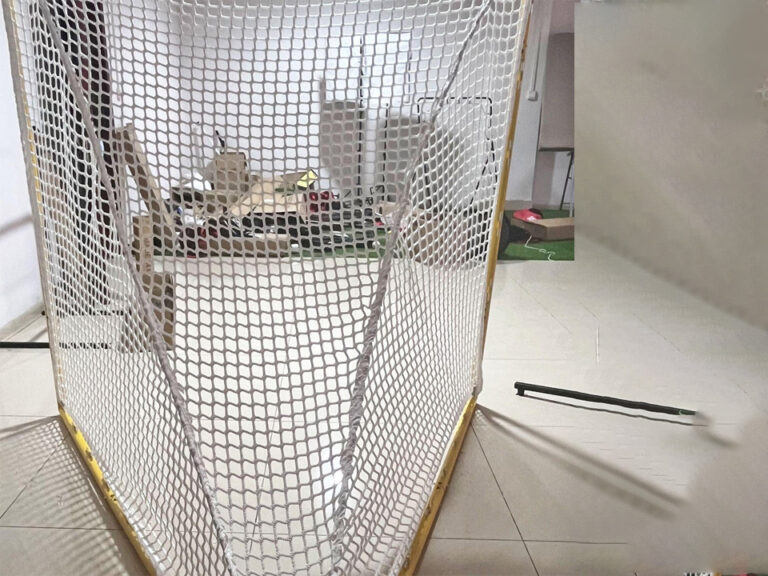Why Do Driving Range Golf Nets Break So Fast
If you run a driving range, you know the feeling. One season the nets look fine. Next season you see holes, frayed edges, and angry customers asking if it’s safe.
Most of the time, the problem isn’t just “bad quality”. The real reasons sit in five areas: materials, UV, impact, weather, and setup. The good news? You can control most of them if you plan your netting like real sports equipment, not decoration.
Table of Contents
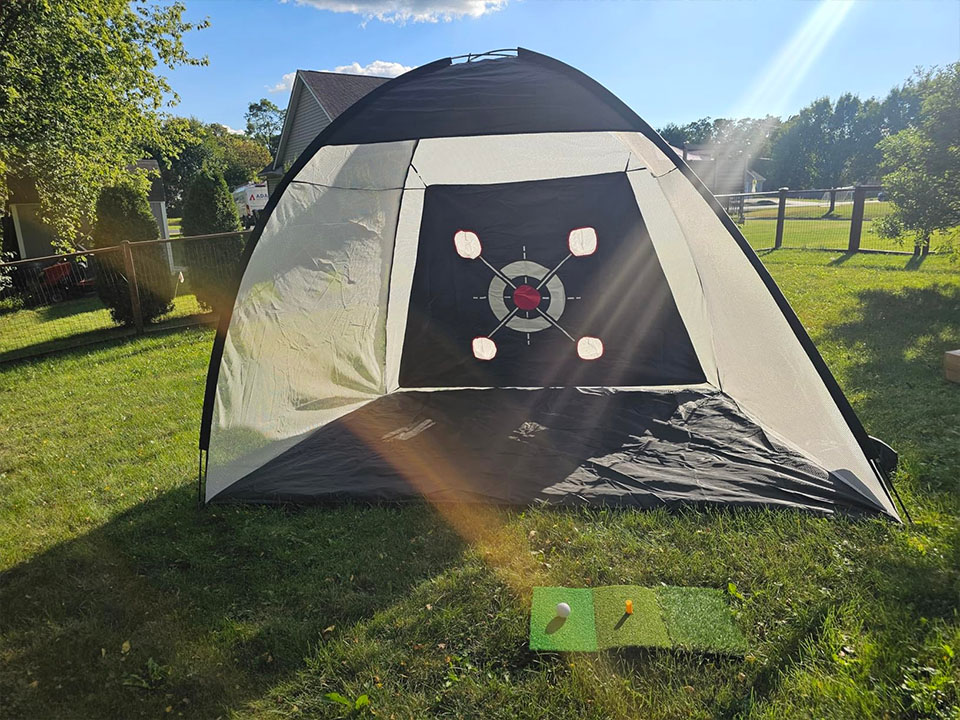
Golf Driving Range Netting Materials and Lifespan
The first place to look is the fiber and mesh you use.
Most driving range golf nets are made from:
- Polyethylene or polypropylene
- Nylon
- In some high-end systems, polyester or special fibers
Suppliers often list a field life for outdoor golf barrier nets:
- Economy polyethylene golf netting: about 5–7 years outside
- Better grade nets: 7–10 years
- Premium series: 10–14 years with heavy twine and strong coatings
If your nets start to fail after only three or four years, it’s usually not a mystery. The twine is too thin, the UV package is weak, or the net type doesn’t match range loads.
At FSPORTS, we apply the same thinking we use in other sports. The way we build a durable 12 ft x 9 ft sports barrier net baseball practice hitting net or a 7×7 baseball practice hitting net is the way you should think about golf barrier nets: right twine, right coating, right mesh.
Polyethylene and Nylon in Golf Barrier Nets
Polyethylene and polypropylene are popular in golf driving range netting because they don’t rot. They work well for tall perimeter nets that catch long drives.
Nylon absorbs impact very well. That’s why cage-style nets and heavy training nets often use it. But nylon can stretch and absorb water if you don’t coat it correctly. That can shorten field life if you don’t design the full system with cables and frames in mind.
When you talk to a factory, don’t just ask for “golf net”. Ask for:
- Twine gauge and break strength
- UV treatment level
- Expected outdoor life in real range conditions
That’s how you prevent a short replacement cycle.
Mesh Size and Knotted vs Knotless Netting
Mesh design also affects how fast a net fails.
Knotted golf nets use small knots where lines cross. These points can become weak spots over time. Knotless nets spread the load more across the mesh. They often keep their shape better.
Mesh size matters too. Smaller mesh uses more material but spreads impact and catches wild shots. Larger mesh is lighter and cheaper, but high-speed balls can cut the same strands again and again.
For long perimeter golf barrier nets, many projects choose UV-treated, knotted polyethylene with around 28 mm mesh. That balance works well for distance control. For closer hitting zones, you may want heavier twine and smaller mesh in the hot areas.
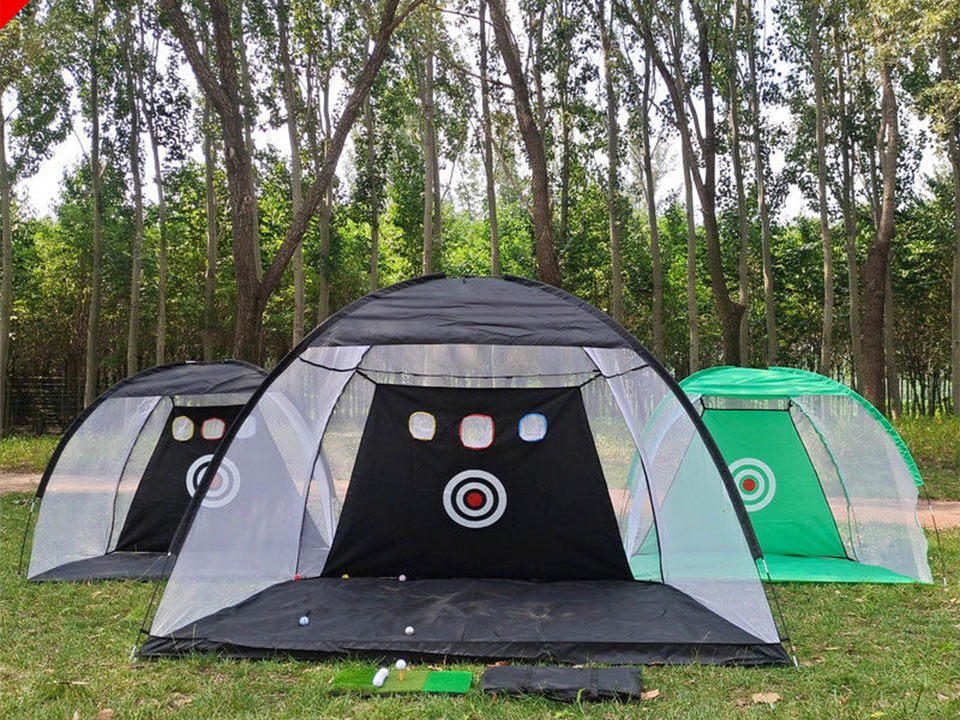
UV Exposure and Weather Damage to Golf Range Nets
Your nets live outdoors 24 hours a day. The sun never stops working on them.
UV light slowly breaks down plastic fibers. The net starts soft and flexible. Over time it fades, turns dry, and becomes brittle. At that point, even a moderate hit or a strong gust of wind can snap fibers.
Rain and humidity add more stress:
- Wet nets get heavier
- Cables sag
- Metal parts rust
- Border ropes loosen
Wind pushes and pulls tall golf barrier nets like a sail. The pressure shows up at the top cables, poles, and corners. Even if nothing rips on day one, the structure gets tired.
Here’s a simple way to think about it.
| Factor | What It Does to the Net | What You Can Do |
|---|---|---|
| UV | Fades color, hardens fibers, makes knots brittle | Use UV-stabilized twine and coatings; avoid indoor-only nets outside |
| Rain and humidity | Adds weight, sags nets, rusts fittings | Choose rot-proof fibers; use galvanized or coated hardware; re-check tension |
| Wind | Loads poles and cables, shakes weak points every day | Design the full system for wind; match pole spacing and cable layout to height |
A serious sports netting factory plans for this. The same mindset that keeps a baseball and softball batting cage net and frame safe under daily use should guide your driving range design.

Impact Stress and “Hot Spots” in Golf Practice Nets
Now think about how your players hit.
Golfers don’t spread shots over the whole net. They send ball after ball into one window. Same bay. Same line. Same height. That zone becomes a hot spot.
High swing speed plus spin works like a small grinder:
- The same strands take hit after hit
- Worn ball covers act like sandpaper
- Fibers thin out and break much faster in that one area
You see the same pattern in baseball and football:
- A baseball softball pitching screen pitcher protection net L-screen or I-screen takes heavy line drives in one lane
- A multi-sports net football throwing net sees thousands of throws into one target
- A disc golf net football net often gets hit in one favorite spot
The solution for golf ranges is simple but powerful:
- Add impact panels made from heavier netting in front of the main mesh
- Rotate or flip these panels during the year
- Keep lighter, cheaper netting for low-impact zones and long-distance barriers
This way you protect your investment where the stress is highest.
Installation and Maintenance Tips for Driving Range Golf Netting
Even a great net will fail early if the structure is wrong.
Common issues:
- The net is pulled too tight with no room to move
- The bottom edge drags on concrete, fences, or walls
- Nets rub against trees, metal edges, or rough surfaces
When you install a golf net, treat it like a serious training system, not just a curtain. Think about how you would set up a baseball hitting net A-type softball goal baseball practice net or a pro garage softball batting cage net. You wouldn’t let it sag on the ground or cut across sharp corners.
A simple maintenance routine also goes a long way:
- Do a quick visual check once a month
- Look for early fraying, small holes, faded and stiff areas
- Check cables, clamps, border ropes, and pole hardware
- Patch small damage before it becomes a big hole
- Plan a deeper inspection after storms or peak season
This isn’t just about safety. For B2B buyers, it also means less downtime, fewer emergency orders, and a more predictable replacement cycle.

How FSPORTS Custom Sports Nets Help Driving Ranges
FSPORTS positions itself as the Top 1 premium sports netting manufacturer in China, serving golf ranges, stadiums, and training facilities worldwide with UV-resistant, high-impact nets in standard and custom sizes. You can see this across the product line on FSPORTS.
For driving range owners, buyers, and distributors, that means three things.
First, custom design and OEM/ODM support. You don’t have to accept a one-size-fits-all golf net. The same team that builds baseball softball pitching batting training nets and mixed-use systems for different sports can help you set bay height, impact zones, and barrier layouts that match your site and local rules.
Second, real multi-sport experience. A factory that already produces football, baseball, and multi-sport systems understands impact loads, wind load, and edge stress. That experience feeds into better golf barrier netting. Products like the baseball net L-screen baseball pitching net or the football trainer throwing net FT-001 show how FSPORTS designs for repeated high-speed hits.
Third, B2B-friendly service. If you are a retailer, wholesaler, e-commerce seller, or OEM brand, you care about stable quality, repeatable specs, and bulk orders. You need the same SKUs again and again, with clear lead times and consistent performance on site. That’s where a focused sports netting factory adds real business value.
In the end, driving range golf nets don’t “break so fast” by chance. They fail fast when material, UV, impact, weather, and installation are not aligned with real-world use. When you choose the right fiber, the right mesh, a smart structure, and a simple maintenance plan, your nets last longer, your bays stay safer, and your range looks more professional to every player who walks in.

